Put Ratio Spread: Meaning, Strategy, and Example


Options trading can be a complex and sometimes overwhelming endeavor for investors. However, by employing the right strategies, traders can effectively manage risk and maximize profits. One such strategy is the put ratio spread, which involves selling a higher number of put options than the number of options bought, resulting in a bearish spread.
A put ratio spread is an option spread that allows investors to profit from a stock’s decline while limiting potential losses. This options trading strategy involves selling a greater number of out-of-the-money put options and buying a smaller amount of in-the-money put options. The goal is to create a bearish spread that can potentially generate a profit if the stock price decreases.
In simpler terms, a put ratio spread is a strategy that allows traders to benefit from a market downturn, making it a popular approach for bearish market conditions.
When executed correctly, a put ratio spread can result in a limited risk and high reward scenario. However, it is essential to understand the mechanics of this strategy and how it can be tailored to fit specific market conditions and investors’ risk tolerance levels.
Key Takeaways
- A put ratio spread is an options trading strategy that involves selling a higher number of put options than the number of options bought.
- This bearish spread can be used to profit from a stock’s decline while limiting potential losses.
- The strategy involves selling more out-of-the-money put options and buying fewer in-the-money put options.
- When executed correctly, a put ratio spread can result in a limited risk and high reward scenario.
- Understanding the mechanics of this strategy and tailoring it to fit specific market conditions and risk tolerance levels is crucial.
Understanding Options Trading Strategies
Options trading strategies are an essential component of stock trading. While some investors may focus solely on buying and selling stocks, options can offer a range of benefits in terms of managing risk and maximizing profits.
Put simply, an option is a contract that gives the holder the right, but not the obligation, to buy or sell a stock at a specified price within a set time frame. Options can be used to generate income, hedge against potential losses or speculate on market movements.
There are many different types of option strategies, each with its own unique set of risks and rewards. Some common strategies include:
- Buying calls and puts: This involves paying a premium for the right to buy or sell a stock at a certain price, known as the strike price.
- Covered call writing: This involves selling call options against a stock that an investor already owns.
- Spreads: This involves simultaneously buying and selling options with different strike prices or expiration dates to limit risk and potential returns.
Options trading requires a strong understanding of the underlying stock and the current market conditions. Traders must be able to analyze market trends and identify key indicators to make informed decisions.
In addition to individual option strategies, traders may also use combinations of strategies to create more complex trading plans. These plans can help to manage risk and optimize returns, but they require a high level of knowledge and skill.
The Role of Options Trading Strategies in Stock Trading
Options trading strategies are an important tool for investors looking to enhance their stock trading performance. At the most basic level, options can be used to hedge against potential losses. By buying a put option, for example, investors can ensure that they have the right to sell a stock at a specified price if its value falls below a certain level.
Options can also be used to generate income. By selling call options against a stock that they own, investors can collect premium payments and potentially earn a profit even if the stock does not rise in value.
Finally, options can be used to speculate on market movements. By buying call options on a stock that they believe will rise in value, investors can potentially earn significant returns if their prediction is correct.
Overall, options trading strategies offer a range of benefits for stock traders. By using these strategies effectively, investors can manage risk, enhance returns, and take advantage of market opportunities.


Exploring the Put Ratio Spread Strategy
The put ratio spread strategy is a popular options trading strategy used by investors who are bearish on a stock or index. This strategy involves buying a certain number of put options while simultaneously selling a larger number of put options at a lower strike price. This is also known as the put ratio backspread.
There are several variations of the put ratio spread strategy that investors can implement to suit their market outlook and risk tolerance. Some popular variations include:
- Bullish put ratio spread: This strategy involves buying put options at a lower strike price and selling a larger number of put options at a higher strike price. This variation is used when an investor is mildly bullish on a stock or index.
- Bearish put ratio spread: This strategy involves buying put options at a higher strike price and selling a larger number of put options at a lower strike price. This variation is used when an investor is bearish on a stock or index.
- Neutral put ratio spread: This strategy involves buying and selling an equal number of put options at different strike prices. This variation is used when an investor has a neutral outlook on a stock or index.
Investors can also implement various put ratio spread strategies, such as:
- Long put ratio spread: This strategy involves buying more put options than the number of put options sold. This is used when an investor has a strong bearish outlook on a stock or index.
- Short put ratio spread: This strategy involves selling more put options than the number of put options bought. This is used when an investor has a neutral to mildly bearish outlook on a stock or index.
When implementing a put ratio spread strategy, it is important to carefully consider market conditions, including volatility and the stock or index’s price movements. Investors should also monitor their positions regularly and adjust them as necessary to manage risk and maximize profits.
Example of a Put Ratio Spread Strategy
Let’s say an investor believes that ABC Corp’s stock price will decrease in the next few months. The current price of the stock is $50, and the investor expects the price to fall to $40 or lower.
The investor decides to implement a bearish put ratio spread strategy by buying five put options at a strike price of $45 and selling 10 put options at a strike price of $40. The premium paid for the five put options is $2,000, while the premium received for the 10 put options is $3,000. The net credit received from the put options is $1,000.
Here’s how the potential profit and loss for this strategy would look:
| ABC Corp Stock Price | Profit/Loss |
|---|---|
| $60 | -$500 |
| $50 | $1,000 |
| $45 | $1,500 |
| $40 | $1,500 |
| $30 | -$500 |
If the stock price falls to $40 or lower, the investor stands to make a profit of $1,500, while the maximum loss is limited to $500 if the stock price rises above $60.
Overall, the put ratio spread strategy can be an effective way for investors to profit from a bearish outlook on a stock or index while limiting potential losses. By understanding the different variations and strategies of this options trading strategy, investors can make more informed decisions and optimize their trading outcomes.
Mechanics of a Put Ratio Spread
To understand the potential profits and losses of a put ratio spread, it is crucial to grasp the mechanics of the strategy. A put ratio spread involves buying a certain number of put options with a higher strike price than the strike price of the sold put options, resulting in a net debit. The sold put options generate credit, which is used to offset the cost of the purchased put options. The strategy has a limited risk, with the potential for high rewards.
When analyzing a put ratio spread, it is essential to calculate the potential profits and losses. The maximum loss that can be incurred is the net debit paid to establish the position. On the other hand, the potential profit is unlimited if the underlying security’s price falls below the strike price of the sold put options at expiration.
The put ratio spread position can be adjusted to accommodate changes in market conditions. For instance, if the underlying security’s price rises, the position can be adjusted by selling additional put options with a higher strike price to generate additional credit. This adjustment will reduce the cost of the purchased put options and lower the breakeven point, increasing the potential profit.
Put Ratio Spread Analysis
When analyzing put ratio spreads, it’s crucial to consider the volatility of the underlying security. If the security experiences high volatility, the put ratio spread strategy may not be suitable, as there is a higher risk of significant losses. Conversely, in a low-volatility environment, the strategy may be more effective in generating profits. Monitoring and analysis of the underlying security’s price movement is also essential to ensuring the position remains profitable.
| Put Ratio Spread Profit | Put Ratio Spread Analysis | Put Ratio Spread Position |
|---|---|---|
| The potential profit for a put ratio spread is unlimited if the underlying security’s price falls below the strike price of the sold put options at expiration. | When analyzing a put ratio spread, it is essential to calculate the potential profits and losses. It’s crucial to consider the volatility of the underlying security, as well as monitoring and analyzing the underlying security’s price movement to ensure the position remains profitable. | The put ratio spread position can be adjusted to accommodate changes in market conditions by selling additional put options with a higher strike price to generate additional credit and lower the breakeven point. |
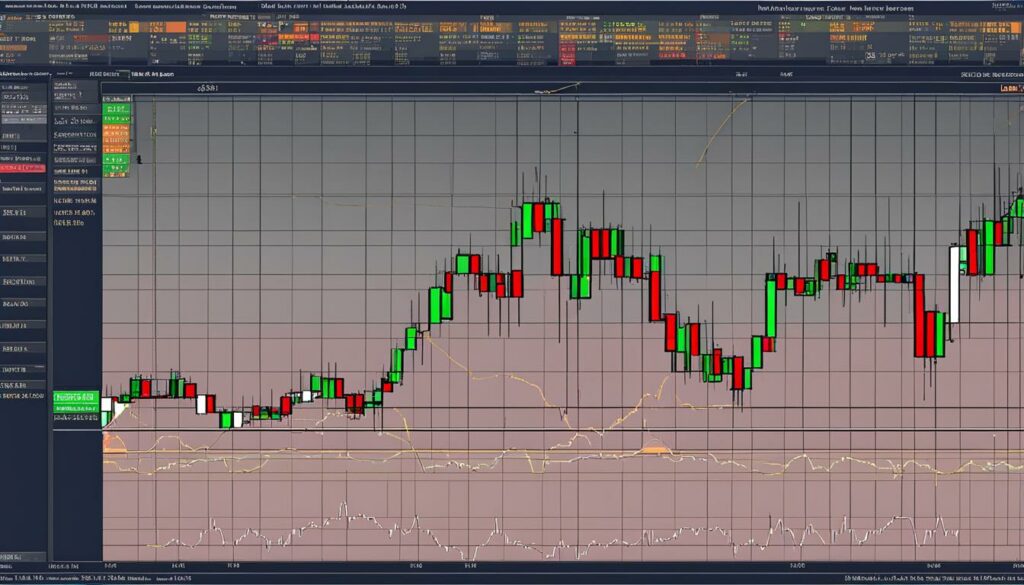

“The put ratio spread strategy has a limited risk, with the potential for high rewards. When analyzing the strategy, it’s crucial to consider the volatility of the underlying security and monitor its price movements to ensure the position remains profitable.”
Advantages of Using a Put Ratio Spread
When considering options trading strategies, the put ratio spread can offer a number of advantages to investors looking to capitalize on a bearish market. Here are some of the key benefits of using a put ratio spread:
- Limited risk: Unlike some options trading strategies that can result in unlimited risk, the put ratio spread strategy provides a clear and defined maximum loss potential.
- Potential for higher returns: When the market moves in the predicted direction, investors can potentially see higher returns compared to a simple put option.
- Flexibility in adjusting positions: The put ratio spread strategy allows for adjustments to be made to the position, which can help manage risk and protect against potential losses.
Overall, the put ratio spread option is a versatile strategy that can be used in a variety of options trading scenarios and is a powerful addition to any investor’s toolkit.
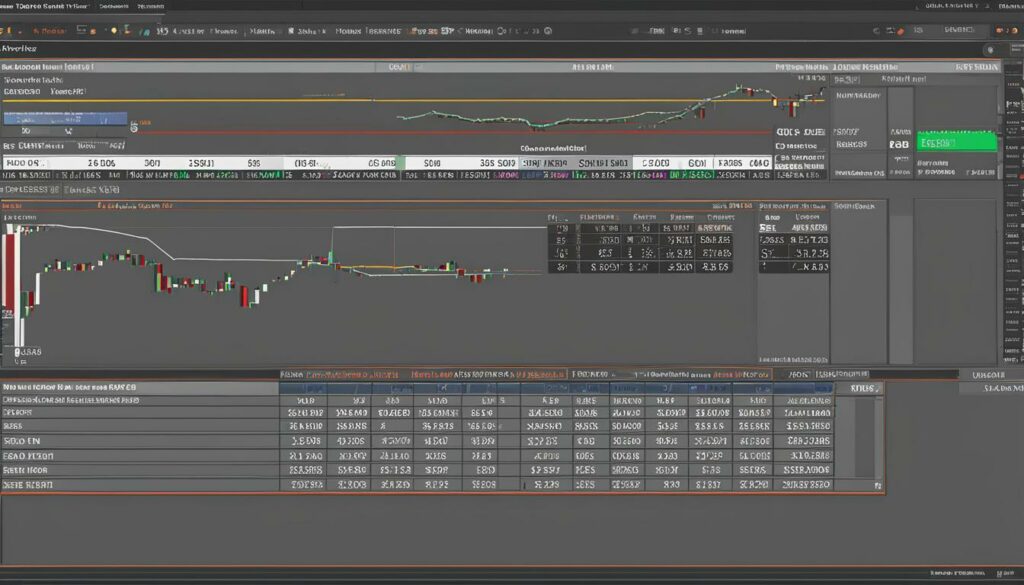

“The put ratio spread strategy can be a great way to capitalize on bearish market conditions, while still managing potential risks and losses.”
Managing Risk in Put Ratio Spread
Options trading always involves risk, and the put ratio spread strategy is no exception. However, effective risk management techniques can help minimize potential losses and protect your investment. Here are some key considerations to keep in mind when managing risk in a put ratio spread:
- Understand the potential risks: Before implementing a put ratio spread, it is important to understand the potential risks involved. These can include losses due to unfavorable market conditions or changes in the underlying asset’s price.
- Limit your exposure: To minimize potential losses, consider limiting your exposure by establishing stop-loss orders or using hedging techniques.
- Monitor market conditions: Keep a close eye on market conditions and be prepared to adjust your position if necessary. If the market moves against you, it may be necessary to close out your position early to limit potential losses.
- Take profits when appropriate: Don’t be too greedy; take profits when they are available. If your position has reached its profit target, consider closing it out to lock in your gains.
By following these key principles, you can effectively manage risk when using a put ratio spread strategy. Keep in mind that there are no guarantees in options trading, but with proper risk management techniques, you can minimize potential losses and maximize your profits.


“Successful traders always manage risk effectively. The put ratio spread strategy can help you limit your risk while maximizing your profits.”
Example of a Put Ratio Spread
Let’s consider an example of how a put ratio spread can be implemented in options trading.
Assume an investor holds 100 shares of XYZ Company, currently trading at $50 per share, and wants to generate some income while protecting against a potential decline in the stock price due to an upcoming market event. The investor decides to use a put ratio spread strategy to achieve this goal.
The investor sells two out-of-the-money put options with a strike price of $45, expiring in 60 days, for a premium of $2 each, generating a total of $400 in income. At the same time, the investor buys one in-the-money put option with a strike price of $50, expiring in 60 days, for a premium of $5.
The following table illustrates the investor’s position:
| Option | Type | Strike Price | Expiration | Premium | Quantity | Total Premium |
|---|---|---|---|---|---|---|
| Short | Put | $45 | 60 days | $2 | 2 | $400 |
| Long | Put | $50 | 60 days | $5 | 1 | -$500 |
The investor’s total premium collected from selling the two put options is $400, while the cost of purchasing the in-the-money put option amounts to $500, resulting in a net debit of $100. If the stock price of XYZ Company drops below $45, the investor will start to incur losses, which are limited to the net debit of $100 for this position.
However, if the stock price remains above the strike price of $45, the investor will earn the premium collected from selling the two put options, resulting in a maximum profit of $300.
In summary, this example demonstrates how a put ratio spread can be used to generate income while protecting against potential losses in a bearish market. It is important to note that this strategy involves some level of risk, and investors should consider their risk tolerance and market outlook before implementing it.
Analyzing Market Conditions for Put Ratio Spread
When considering a put ratio spread strategy, it is essential to analyze market conditions to determine whether it is the right approach to take. To effectively analyze conditions, specific key indicators and factors must be taken into account.
- Volatility: One important factor to analyze is volatility. High volatility in the market could mean that a put ratio spread will be more effective since it could result in greater price fluctuations.
- Bearish Trends: Another essential factor to consider is the presence of bearish trends. When the market displays a downward trend, a put ratio spread strategy can help traders take advantage of these bearish movements.
- Implied Volatility Skew: Traders should keep an eye on the implied volatility skew, which is the difference in implied volatility between higher and lower strike prices. An upward slope of implied volatility skew could imply that a put ratio spread may be a profitable approach.
It is also essential to consider the stock’s recent price movement, as it could indicate the presence of an uptrend or a downtrend. By analyzing these conditions, traders can make informed decisions and determine whether implementing a put ratio spread strategy is the best approach to take.
There are several tools available to help traders analyze market conditions, including charts, trend lines, and technical indicators. These elements can help traders gain insights into the market’s behavior and trends, providing the necessary information to make informed decisions and optimize trading outcomes.
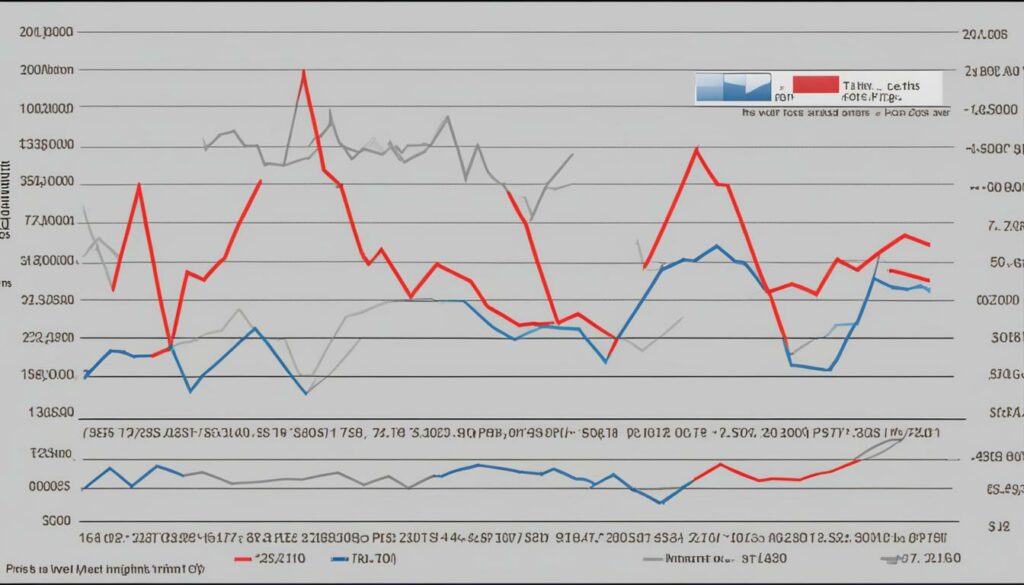

“By analyzing these conditions, traders can make informed decisions and determine whether implementing a put ratio spread strategy is the best approach to take.”
Variations of Put Ratio Spread
There are several variations of the put ratio spread strategy that traders can consider, depending on their risk appetite and market outlook. These variations offer flexibility and customization options, allowing traders to adapt the strategy to specific market conditions and achieve their desired trading outcomes.
Put Ratio Backspread
One popular variation of the put ratio spread is the put ratio backspread. This strategy involves buying a higher number of put options than the number of options sold, resulting in a net credit. This variation provides a higher potential for profit if the underlying security falls sharply, making it an attractive strategy for traders with a bearish outlook.
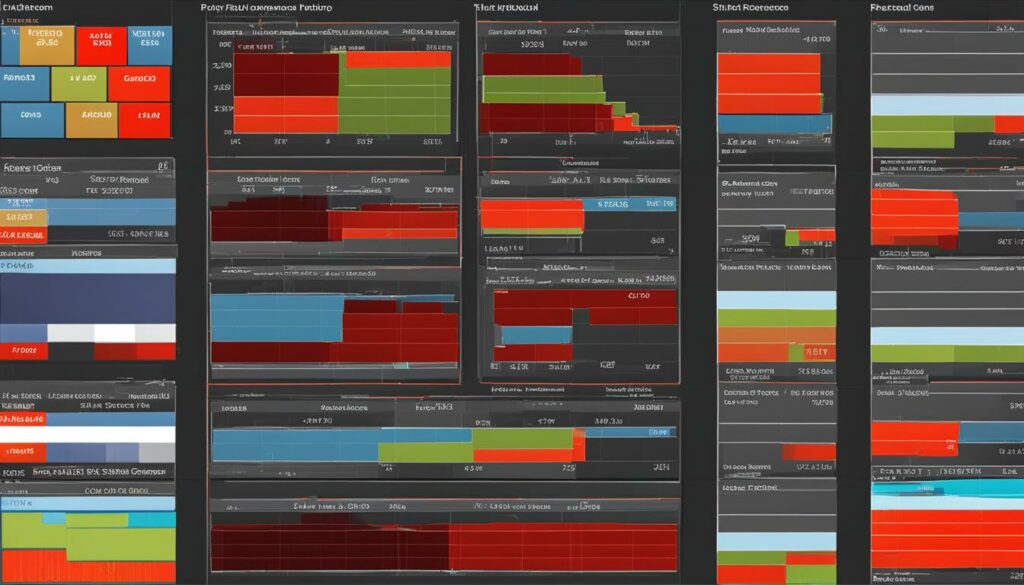

Long Put Ratio Spread
The long put ratio spread is another variation of the put ratio spread strategy, which involves buying put options at a lower strike price and selling a higher number of put options at a higher strike price. This variation can generate a net credit and provides limited risk, making it an ideal strategy for traders who anticipate a moderate downward move in the underlying security.
Short Put Ratio Spread
The short put ratio spread is a variation of the put ratio spread that involves selling a higher number of put options than the number of options bought. This variation provides a net credit and limited risk. It is suitable for traders who expect the underlying security to move slightly upward or remain steady.
Customizable Variations
Traders can also customize their variations of the put ratio spread strategy by adjusting the number of options bought and sold, strike prices, and expiration dates. This flexibility allows them to tailor the strategy to their specific trading needs and objectives.
It is essential to understand the unique risks and rewards associated with each variation of the put ratio spread strategy and choose the most appropriate option based on market conditions and individual trading goals.
Key Considerations for Put Ratio Spread
When implementing a put ratio spread strategy, certain key considerations must be kept in mind to ensure the desired outcomes are achieved. These considerations include:
Put Ratio Spread Position
The position established for a put ratio spread is critical to the strategy’s success. It is important to establish the correct ratio between long and short options to maximize potential profits and minimize potential risks. A typical put ratio spread involves selling one or more out-of-the-money puts and buying a smaller number of in-the-money puts. The position should be adjusted to account for changes in market conditions or volatility levels.
Put Ratio Spread Option
The selection of options for a put ratio spread is critical. Options with sufficient liquidity and trading volume should be selected to ensure ease of execution and minimize bid-ask spreads. The strike prices and expiration dates should be selected based on market conditions and the desired risk/reward profile. Options selected should be consistent with the trader’s overall trading strategy and risk tolerance.
By carefully considering the position and options selected, traders can manage potential risks and maximize potential profits when using a put ratio spread strategy.
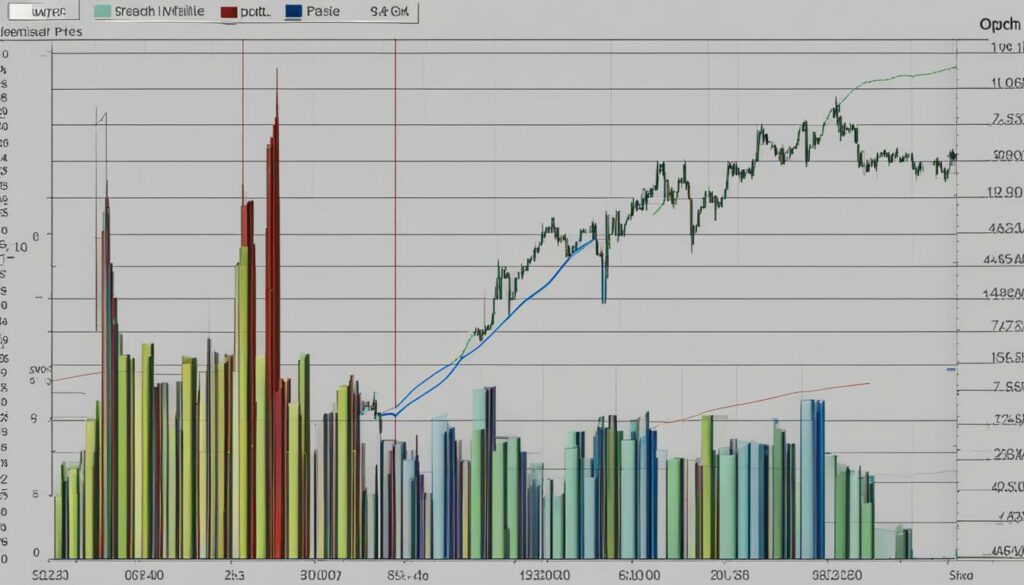

Implementing Put Ratio Spread Strategies
When it comes to put ratio spread options trading, proper execution is key to achieving success and maximizing profits. Here are some practical tips and guidelines for implementing this strategy effectively:
- Establish the appropriate position: One of the most crucial steps in executing a put ratio spread is determining the appropriate position. This involves identifying the strike price for the long put option and the number of short put options to be sold. Make sure to take into account market conditions, risk tolerance, and desired profit potential.
- Execute the trade: Once the appropriate position has been established, it’s time to execute the trade. This involves buying the long put option and selling the short put options. Pay close attention to the market and timing to ensure favorable execution.
- Monitor the trade: After executing the trade, it’s important to monitor the position regularly. Keep an eye on key market indicators and any changes in market conditions that may impact the position. This will help to identify any necessary adjustments to the position.
- Adjust the position: Depending on market conditions and risk tolerance, it may be necessary to adjust the position of the put ratio spread. This can include buying additional long put options or selling more short put options. It’s important to make adjustments based on sound analysis and avoid making reactive decisions.
By following these guidelines and staying informed about market conditions, investors can effectively and profitably implement put ratio spread strategies in their options trading portfolio.
Example of Put Ratio Spread Options Trading
To better understand how to implement a put ratio spread strategy, let’s look at an example:
| Long Put Option | Short Put Option |
|---|---|
| Strike Price: $50 | Strike Price: $45 |
| Premium: $3 | Premium: $1 |
| Quantity: 1 | Quantity: 2 |
In this scenario, an investor buys one long put option at a strike price of $50 and sells two short put options at a strike price of $45. The premium for the long put option is $3, while the premium for the short put options is $1 each.
If the stock price drops to $20 at expiration, the long put option will be worth $30, resulting in a profit of $27. At the same time, the two short put options will expire worthless, resulting in a profit of $2. Overall, this would result in a net profit of $29.
As this example demonstrates, implementing a put ratio spread strategy can be an effective way to profit from bearish market conditions while managing risk.


Conclusion
Overall, the put ratio spread strategy can be a valuable tool for traders looking to profit from bearish market conditions. By combining options contracts in a strategic ratio, traders can limit their risk while still achieving potentially higher returns.
However, it’s important to remember that options trading carries inherent risks, and the put ratio spread strategy is no exception. Proper risk management techniques should always be employed to protect your investment and maximize your potential profits.
When analyzing market conditions for potential put ratio spread opportunities, keep in mind the key indicators and factors discussed throughout this article. Consider the various variations of the put ratio spread strategy and select the one that best fits your trading style and investment goals.
Implementing put ratio spread strategies successfully requires patience, discipline, and a thorough understanding of the mechanics involved. By following the guidelines and tips outlined in this article, you can increase your likelihood of achieving success with this options trading strategy.
Whether you’re a seasoned options trader or just starting out, the put ratio spread strategy is definitely worth considering. With its flexibility and potential for higher returns, it may be just the strategy you need to take your trading to the next level.
FAQ
What is a put ratio spread?
A put ratio spread is an options trading strategy that involves selling a certain number of out-of-the-money put options while simultaneously buying a greater number of in-the-money put options. It is a bearish spread strategy used to profit from a decline in the underlying asset’s price.
How does a put ratio spread work?
In a put ratio spread, the investor sells a lower number of put options with a higher strike price and buys a greater number of put options with a lower strike price. This creates a spread where the investor collects a premium from the sold options while creating a potential for higher profits if the underlying asset’s price decreases.
What are the variations of a put ratio spread?
There are different variations of a put ratio spread strategy, such as the put ratio backspread, which involves selling more put options than buying. Other variations include adjusting the number of options traded and the strike prices based on market conditions and risk tolerance.
What are the advantages of using a put ratio spread?
Using a put ratio spread offers several advantages. It allows for limited risk exposure while offering the potential for higher returns. The strategy also provides flexibility in adjusting positions and managing risk, making it a popular choice for options traders.
How do you manage risk when using a put ratio spread?
Effective risk management when using a put ratio spread involves monitoring the position and making adjustments as needed. This may include closing or rolling the position to limit losses, implementing stop-loss orders, or hedging against adverse market movements.
Can you provide an example of a put ratio spread?
Sure! Let’s say an investor sells 2 out-of-the-money put options with a strike price of $50 and buys 4 in-the-money put options with a strike price of $45. If the underlying asset’s price falls below $45, the investor will start to profit from the spread. The potential profit is capped at the difference between the strike prices, while the risk is limited to the premium paid for the options.
How do you analyze market conditions for a put ratio spread?
Analyzing market conditions for a put ratio spread involves considering factors such as the underlying asset’s price trends, volatility levels, and potential catalysts that could impact the asset’s price. Technical analysis tools and indicators can also be used to identify suitable entry and exit points for the strategy.
What are some key considerations for implementing a put ratio spread?
Key considerations for implementing a put ratio spread include selecting the appropriate strike prices and expiration dates for the options, adjusting the position as market conditions change, and closely monitoring the spread’s performance. It is also important to understand the potential risks and rewards associated with the strategy.
How can I effectively implement put ratio spread strategies?
To effectively implement put ratio spread strategies, it is important to have a well-defined plan and follow a disciplined approach. This includes proper trade execution, identifying suitable opportunities, managing risk through position adjustments, and adapting to changing market conditions.




